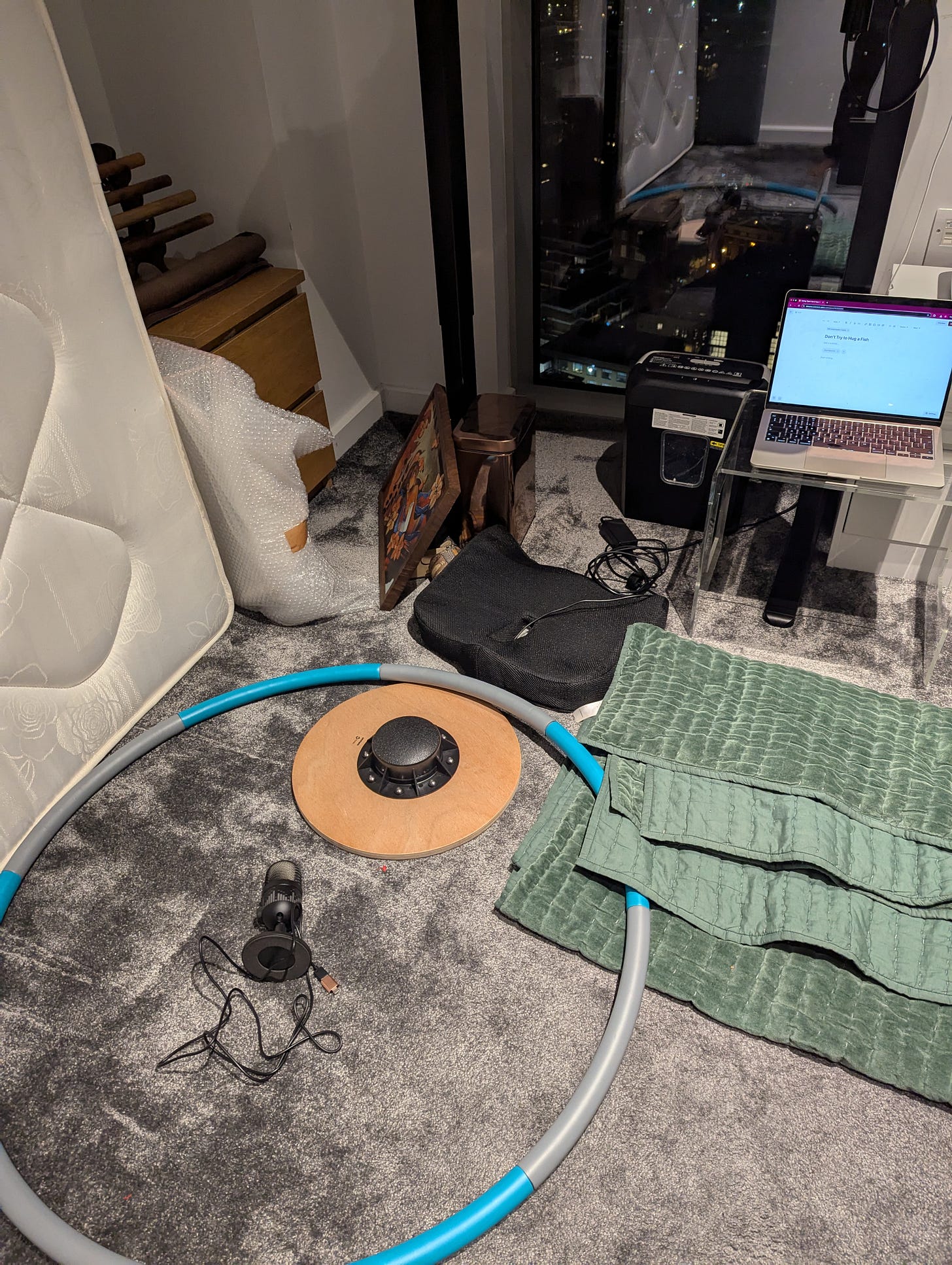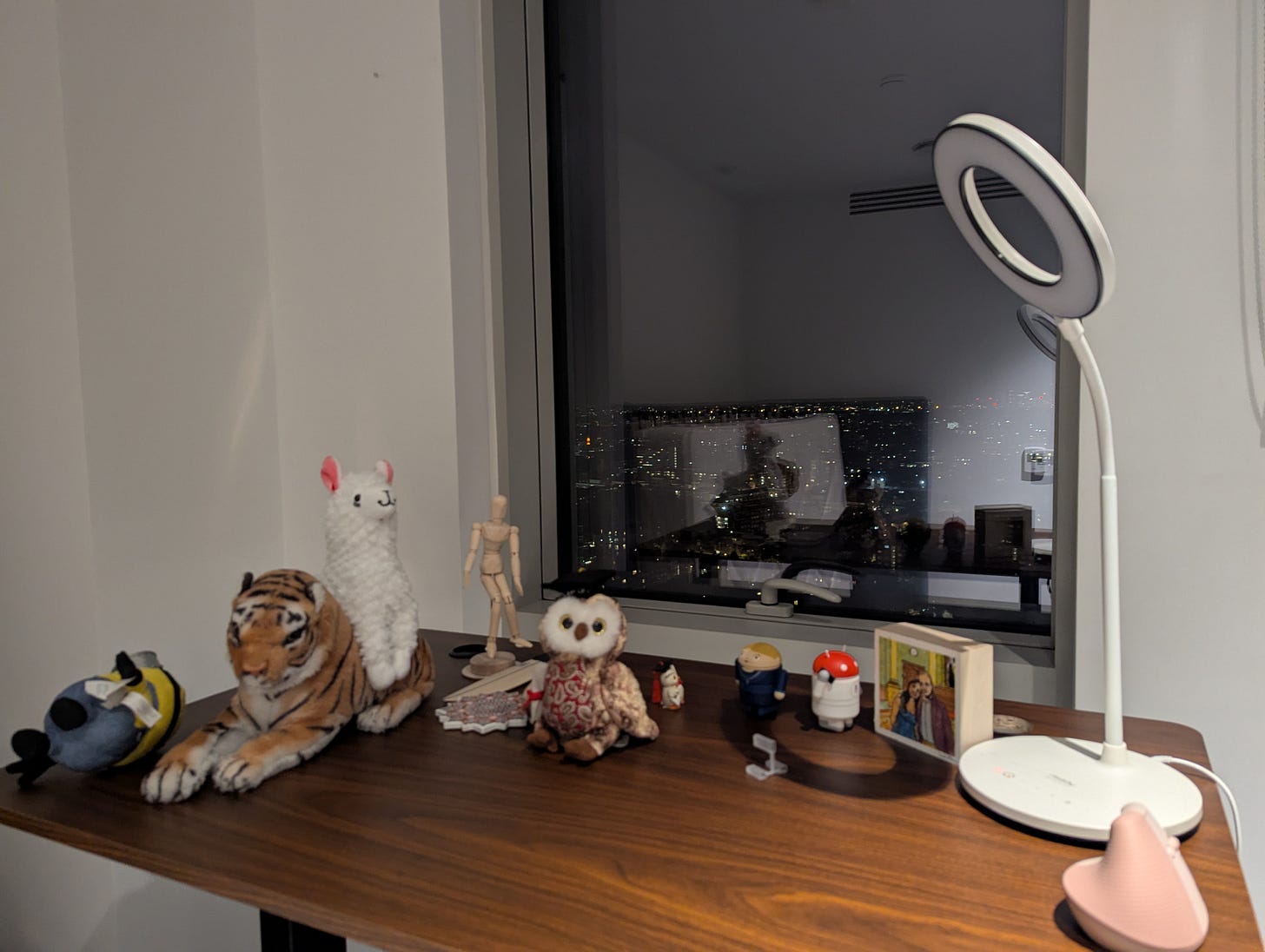Nearly everyone I know has had the experience of an adult, usually a parent, coming to their room and exclaiming, “Why is it such a mess in here?”
When this happened to me, I would of course jump straight to explaining, “We wanted to zipline across the corridor, but the rope wouldn’t hold our weight, so we knotted the blankets, but then realized that wasn’t long enough to…”
Now, imagine you’re at work, trying to ramp up a new boss / executive on your project, and they ask, “Why did you do it this way?”
Those finely honed instincts jump in, and you start to explain. “When we first started the project, the vision was X. Then, there was a change of leadership, and we pivoted to Y. But then 3 people left the team and we had to drop this feature…”
So.
You know they’re not actually asking Why, right?
Last week, someone broke me out of this pattern. I was explaining my project, and an exec stopped me, saying, “You’re trying to hug the fish. Don’t hug the fish.”
He explained how, often, we get deep into the weeds of whatever we’re doing until we fall in love with the complexity we’ve encountered instead of trying to reduce it. We explain how hard it is to hug the fish, because it’s slippery and squirming out of our arms (because it’s scared as hell and likely going to die), and how we’ve tried multiple strategies to hug this fish…
That wasn’t the assignment though. Nobody asked us to hug the fish. But we’ve forgotten what we were initially trying to do, because the part of our brain that loves puzzles is intrigued by the difficulty of trying to hug it, and our pride can’t stand giving up without a solution. Worse, once we start explaining what we’re doing to other people, the crowd starts chiming in with ideas. “Have you tried…?” instead of just telling us to STOP.
Since last week, I’ve been recalibrating on the many ways I’ve either become blind to complexity or actively fallen in love with complexity instead of trying to reduce it. For example, I am writing this post by kneeling on the floor here:
There are many Whys that this picture may inspire. Why are you kneeling on the blanket instead of the actual kneeling cushion a foot to the left? Why are a disconnected mic, a balance board and a hula hoop lying there? Why are you kneeling at all?
Instinctive response: Because my standing desk is cluttered with a tiger, a llama, and at least two owls.
A similar anti-pattern plagues my current WIP novel. As I’m editing it, I ask, “Why is this scene here?” and respond instinctively, “It was initially supposed to be part of Book 1, but then that got too long…”
I ask, “Why does the character say this right here?” and instead of recognizing that instinct as a deterrent — something’s off that I would even ask the question— I proceed to explain to myself, “Because we need to know why she’s going to storm off two paragraphs later.” This is totally ass-backwards, because the character doesn’t know the reader exists, and doesn’t owe the reader any explanations.
How do I stop being blind to the complexity I’ve swallowed? How do I stop hugging fish? If you have any ideas, let me know.
Ending this post here because kneeling is hard.





What if the question isn’t in hugging or not hugging the fish, but it's learning to discern between a dying fish or a transforming one? Because what looks like a tiny fish might actually be the beginning of an ocean. And the only reason you know that is because you’ve been the one hugging it
Two tendencies of the mind in play here:
1. We act in patterns. When a situation seems to match something we've encountered before, we subconsciously use those past experiences to guide our actions, especially if the previous outcome was painful--we learned from it, and we're now hard-wired to avoid repeating it. Say you miss a morning flight and lose a job because rebooking screwed up your interview. Now you're hard-wired to avoid morning flights when there are potential downstream consequences, and you are probably completely unaware of that bias unless you really slow down and think about it.
2. We only consider potential discrepancies between our experiences and others' when conflict arises. At that moment, we begin to realize that we have expectations and goals that are fully implicit, and not shared by the group. Maybe you're shocked that Jeff doesn't already have his shoes on, because the flight is in two hours, and your goal was to leave earlier. Jeff didn't sit in that traffic jam with you before that last flight, so he doesn't expect two hours to be insufficient time, so didn't share your goal.
So when parents ask why this room is a mess, it's because the children didn't share their expectation that it would be clean at that moment. Similarly, you are a hugger and just give everyone a hug when you meet them, so eventually you meet a fish and try to hug it--just acting in pattern. Someone else who is not a hugger will see what you're doing and point out--don't hug that fish, that's not what it wants!
In any case, this is why journaling* is so powerful. It forces you to slow down and think about your decision making process, and recognize when your programming might not line up with others'. If it comes up over and over again, it's helpful to assign a name to the pattern, so you can be aware of it, when you fall into it, and you can talk to other people about it. A really good name is memorable, and metaphors usually are. That's why you get "hugging the fish".
So what you need to do is start picking apart and naming the patterns that led you to hug the fish. One that I often use is "consistifying", which is a good instinct, but frequently pointless work when it's not attached to a real goal. That's just one example; overcomplicating is a build-up of many such patterns.
*: Therapy does the same thing, just aided by another person.